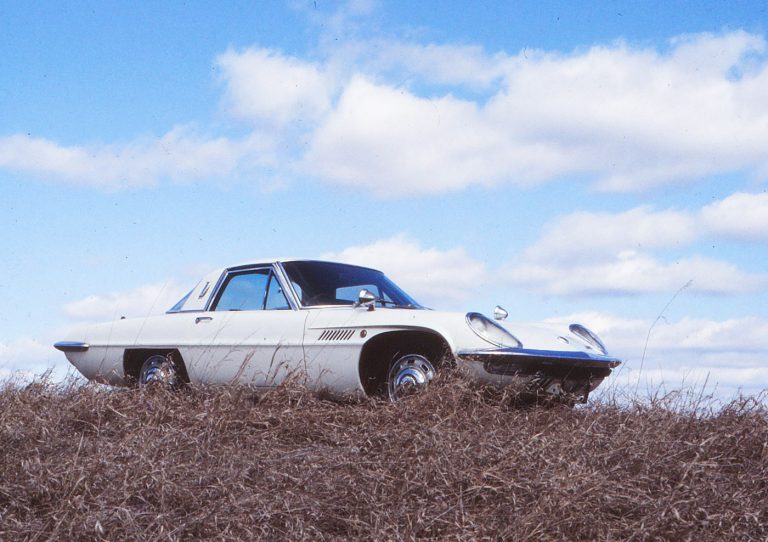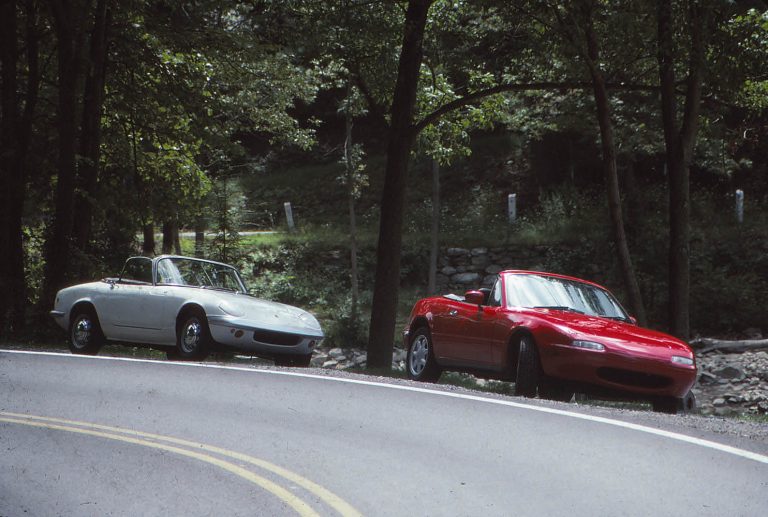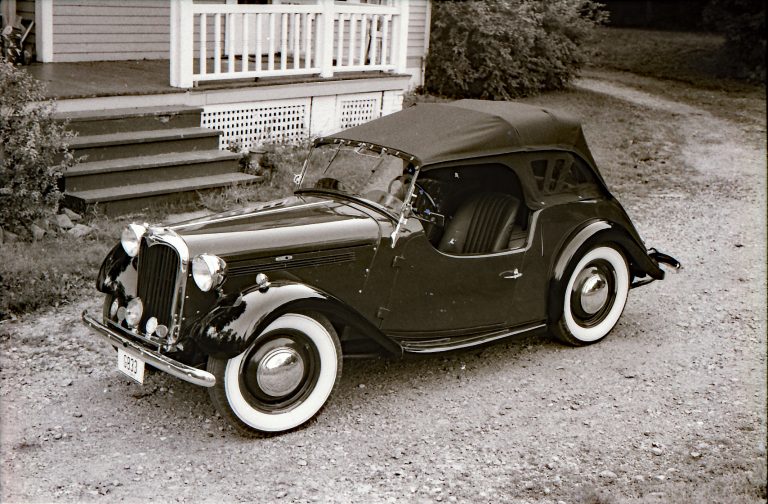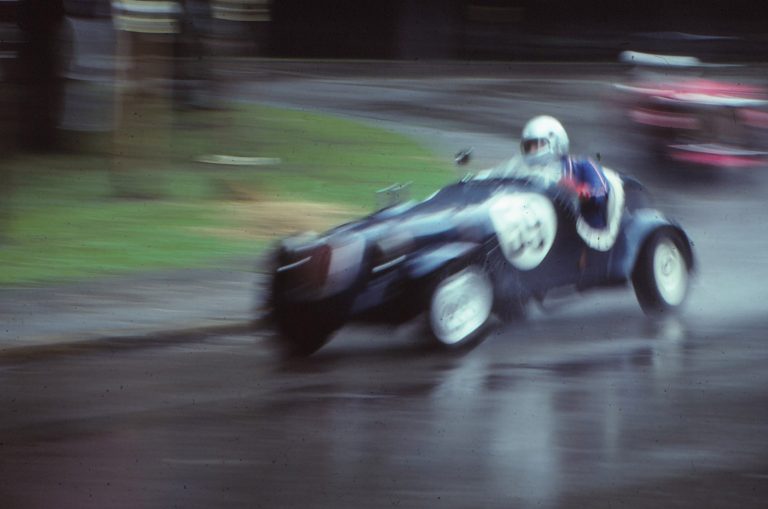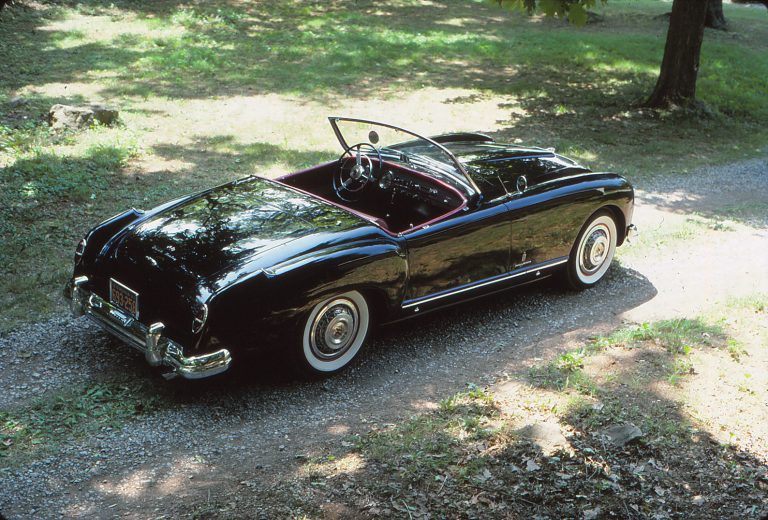History/driving impressions originally published in AutoWeek, September 3, 2001; republished by the author
When the roll is called up yonder for great cars that no one ever thinks about anymore, surely the Lancia Aurelia Spyder’s name will be written in gold. No one really thought very much about it in 1956 when it was new, despite it being Lancia’s icebreaker for reentry into the U.S. market. The Italian carmaker had been absent from the States since 1920 when Lambdas and a few Dilambdas were sold here. The Aurelia Spyder was designed for the American market and what Italians thought Americans would like.
The Spyder was built on the Aurelia Gran Turismo platform—though they didn’t call it a platform then—with a wheelbase shortened by 7¾ inches. Designed and built by Pinin Farina (two words then, and best known for the Nash-Healy at that point), the car had a true monocoque steel body, a construction technique pioneered by Lancia in the 1920s with the Lambda. The Spyder was distinctive otherwise as well. The front suspension was the sliding pillar type used by the Lambda, and the rear suspension was deDion, an arrangement guaranteeing all four wheels would remain vertically aligned with the body. The design was called “pleasing if not distinctive” by Road & Track. A typical ‘50s design, derivative of the XK120, the Spyder had a few novel twists, including split front and rear bumpers that kick up in the center, and American-style wraparound windshield, and of course the Lancia shield-shaped grille. An unusually long rear deck allowed a trunk, said Motor Trend, “spacious by sports car standards.” Road & Track noted the Spyder had a built in heater-defroster system.” What will they think of next!?
The most unusual feature is commonplace today: The Aurelia engine was the first production V6 in the world. Although Lancia had decades of experience with narrow-angle V4s, the common engineering knowledge was that a V6 was inherently unbalanced, an opinion not shared by Vittorio Jano. Usually described as “legendary,” Jano was between prewar Alfa fame and later work for Ferrari. He and assistant Francesco de Virgilio began work on a V6 in 1948. By 1950 it was powering a Lambda sedan. The all-aluminum engine had iron liners and an unusual valve train: The camshaft in the valley operated pushrods with rockers rotated 90 degrees from the usual, opening valves forming a “V” over each cylinder but aligned along each bank. Various sizes were produced, the Spyder measuring 2451 cc. The Spyder had a single, dual-throat downdraft Weber carburetor and produced 110 hp.
Another curious feature of the Aurelia was the rear-mounted clutch and transmission. This allowed a floor flat and wide as a Corvair’s, obvious after one steps over the high sill of the Aurelia Spyder owned by Walter Eisenstark and Richard Klein of Yorktown Heights, New York. The high sill increases chassis rigidity. The driveshaft tunnel was small, a longish gearshift lever projecting from the floor just to its right. Reverse is a little hard to find, and the forward gears a little tricky, but the clutch is smooth and with a little practice the engine is talking sweeter than a campaigning politician. The four-wheel drum brakes, inboard at the rear, need a good push, but the trans is fully synchro.
At 45 mph, front end wobble that has been impossible to exorcise yields, I’m told, to a typically Italian solution. Go faster. Cruising at 85 mph is fine. And that’s easy for the Spyder, which tops out at 108 mph, according contemporary tests. Zero to 60 took 12.5 seconds, the quarter-mile 18.5.
This came, however, at a price variously quoted as $5,250 and $5,475, rather steep for 1956, when you could buy a new Chevrolet for under $2,000. Lancia made about 12,500 Aurelia sedans and about 8,500of the Aurelia coupe/GT. Aurelia Spyders were comparatively rare: Only about 650 were made, and of those, only 86 were made to “American specifications.” It’s a rear treat indeed, making a drive on one today, well, golden.
Addendum: Lancia would continue with various versions of the narrow-angle vee engines, including a V-6 in the Lancia Flaminia luxury sedan.A narrow angle V-4 Lancia powered the Lancia Fulvia sport coupe. However, the first vee-engined Lancia was the innovative 1924 Lancia Lamda.



